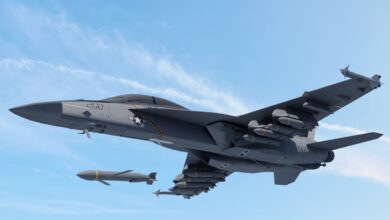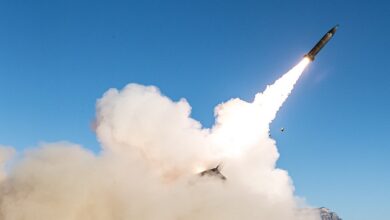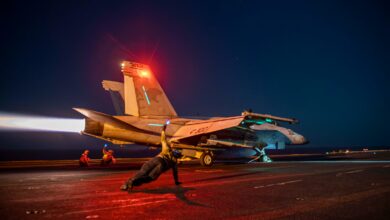US, Israel Complete Unmanned and AI Exercise in Red Sea
US and Israeli naval forces have wrapped up a four-day bilateral exercise in the Red Sea Gulf of Aqaba to enhance maritime awareness through unmanned systems and artificial intelligence.
The “Digital Shield” exercise featured unmanned surface vessels of the US 5th Fleet’s Task Force 59: the Devil Ray T-38 and Saildrone Explorer.
US Naval Forces Central Command formed Task Force 59 in September 2021 to integrate new unmanned systems and artificial intelligence into US naval operations across the Middle East.
The task force has operational hubs in Bahrain and Jordan.
The American naval vessels sailed alongside Israeli manned vessels from the 915th Fleet and Snapir Unit.
“Integrating unmanned systems with our partners advances our integration efforts,” US Navy Lt. Cmdr. William Ricketts said. “Ultimately, we are strengthening ties and innovating new capabilities with regional partners to enhance maritime security.”
‘Innovative Opportunity’
According to the Israeli Defense Forces, the joint training integrated artificial intelligence as part of the navy’s “operational toolbox.”
“The ‘Digital Shield’ exercise is an expression of the integration of advanced technology, an operational response and cooperation in the face of challenges that require an integrated response to security in maritime space,” Israeli Brigadier General Daniel Hagari said.
“The cooperation of the forces on manned and unmanned platforms is an innovative opportunity to build an extensive maritime image, and to integrate other parties and forces that work together in the maritime space, with all of them having a common goal — to maintain the security of the area and the various shipping routes,” Hagari added.

Unmanned Surface Vessel
The Devil Ray T-38, manufactured by Florida-based Maritime Tactical Systems, can carry a payload of up to 4,500 pounds (2,040 kilograms) and has a maximum speed of 80 knots (93 miles/150 kilometers per hour).
The vessel’s speed and carrying capacity allow for larger-scale logistics operations.
The Devil Ray can also integrate unmanned surface vehicles, unmanned aerial vehicles, unmanned underwater vehicles, and remotely operated vehicles.
The 23-foot (7-meter) Saildrone Explorer utilizes the wind to navigate. It is equipped with solar panels to power onboard computers and sensors with AI technologies.
It is equipped with an automatic identification system transceiver, radar reflector, navigation lights, high-visibility wing colors, and four onboard cameras to autonomously collect high-quality data during sea operations.
The Saildrone Explorer can also be used to conduct autonomous long-range data collection missions for up to 12 months without returning to port for maintenance or refueling.












